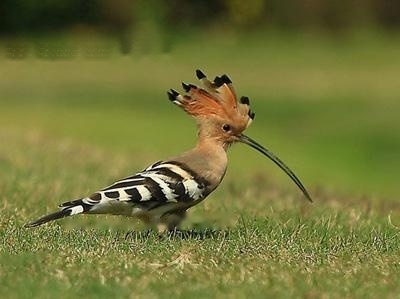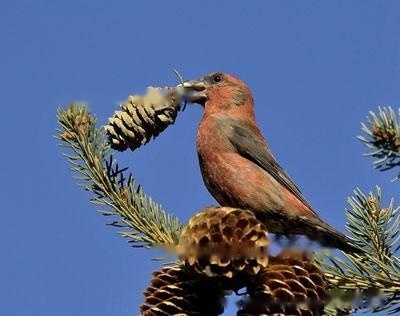The Crested Lark is a small songbird. Body length 17-18 cm, wingspan 29-34 cm, weight 35-45 grams. A slightly larger lark with brown longitudinal stripes. With a crest, the crest feathers are long and narrow. The upper body is sandy brown with nearly black vertical stripes, and the tail coverts are yellow. The underparts are pale yellow, and the chest is densely covered with nearly black longitudinal stripes. It appears to be short and short with a short tail, and a slightly long and downturned mouth. In flight, the wings are broad and rusty under the wings; the tail is dark brown and the sides are tan. Young birds are densely spotted on the upper body. Distinguished from lark in silhouette, large and pointed crest, long and curved bill, less brown ear feathers and no white rear flange. The central pair of tail feathers is light brown, the outermost pair of tail feathers are mostly yellow or brown, and only the inner feather edges are dark brown. The outer second pair of tail feathers has only one broad brown fringe. The upper wing coverts are light brown or sandy brown, the flight feathers are dark brown, the outer feathers are brown, and the inner base also has a wide brown feather margin.
The plumage is similar to that of a sparrow. It is adapted to live on the ground. The legs and feet are strong and powerful. The hind toes have a long and straight claw; Shape, suitable for pecking seeds; wing tips and long, inner flight feathers (tertiary flight feathers) longer; tail feathers medium length, with shallow forks, outer tail feathers are often white.
The iris is dark brown; the beak is yellowish-pink, and the tip of the beak is dark; the claws are pinkish.
Size measurement: body weight ♂34-50g, ♀33-45g; body length ♂156-190mm, ♀148-182mm; mouth peak ♂14-20mm, ♀15-19mm; wing ♂96-113mm , ♀92-113mm; tail ♂55-78mm, ♀60-74mm; ♂20-28mm, ♀22-30mm. (Note: ♂male;♀female)




